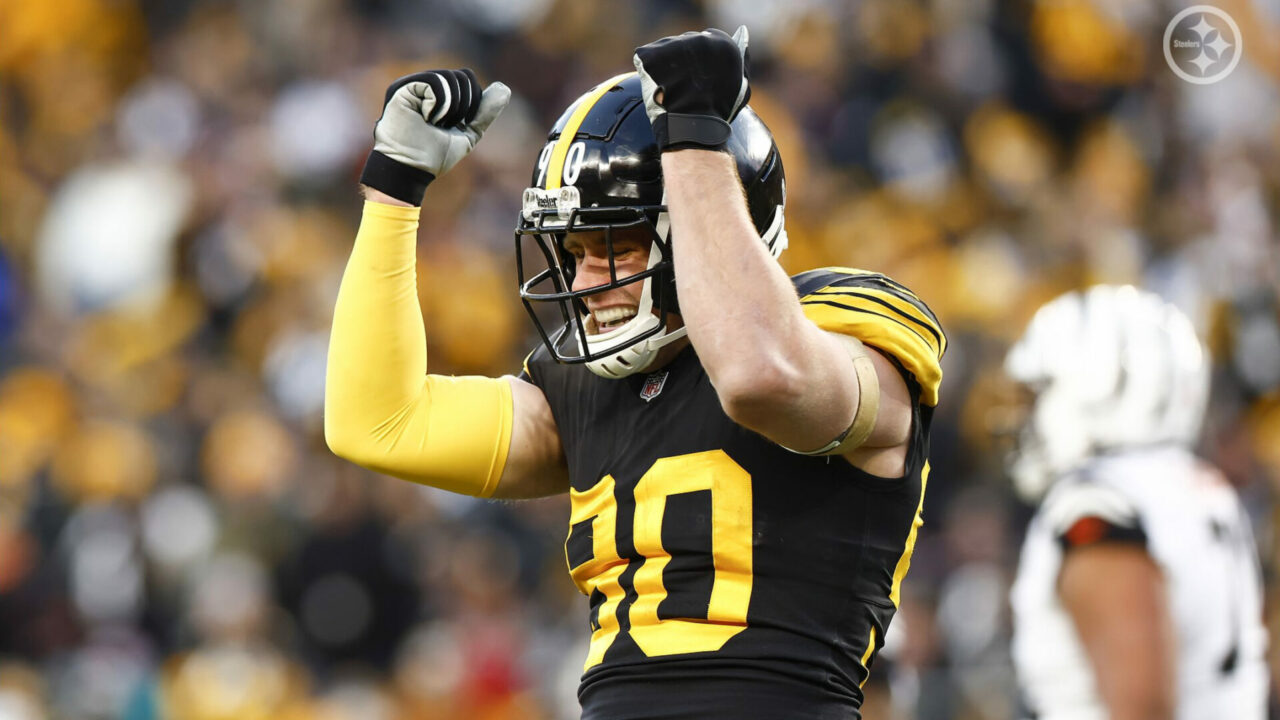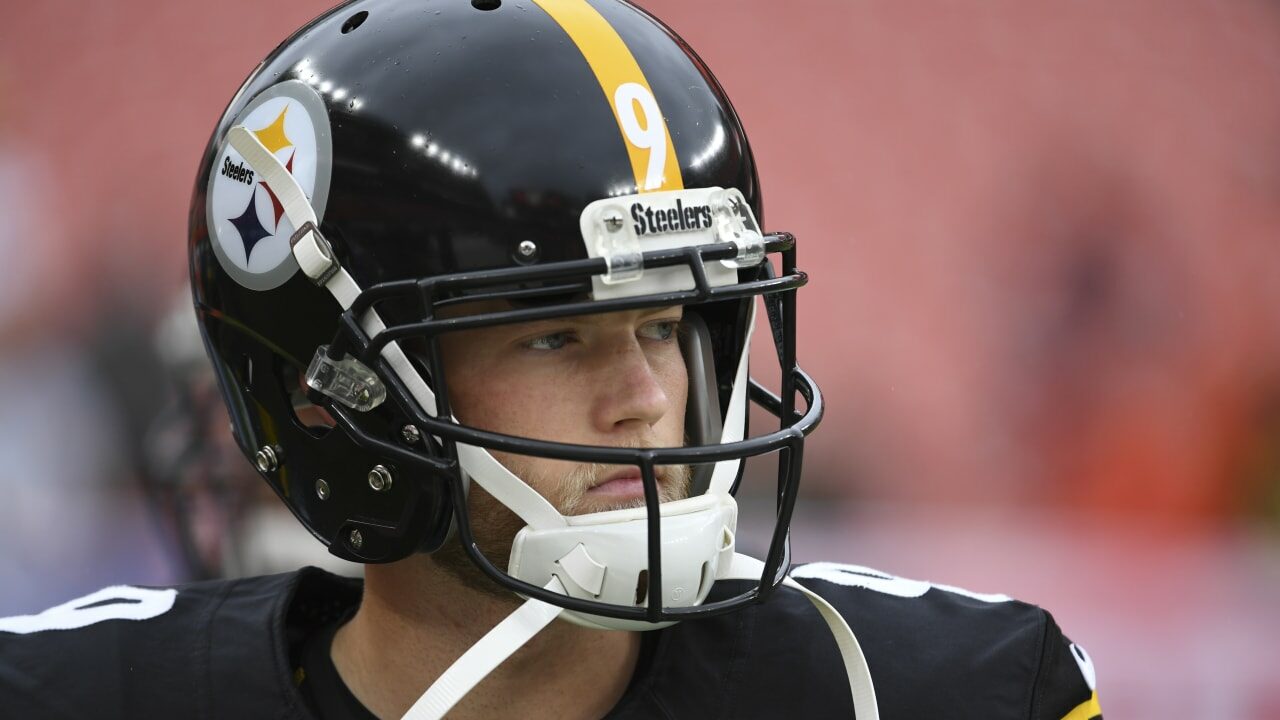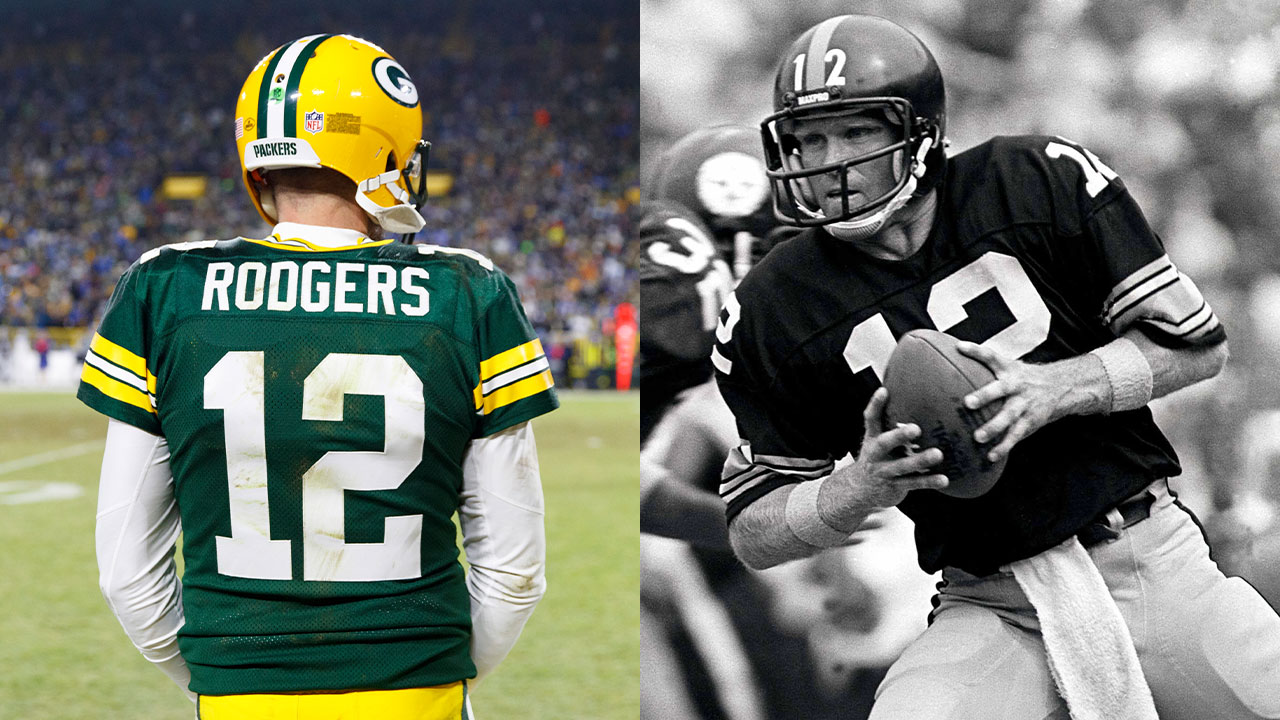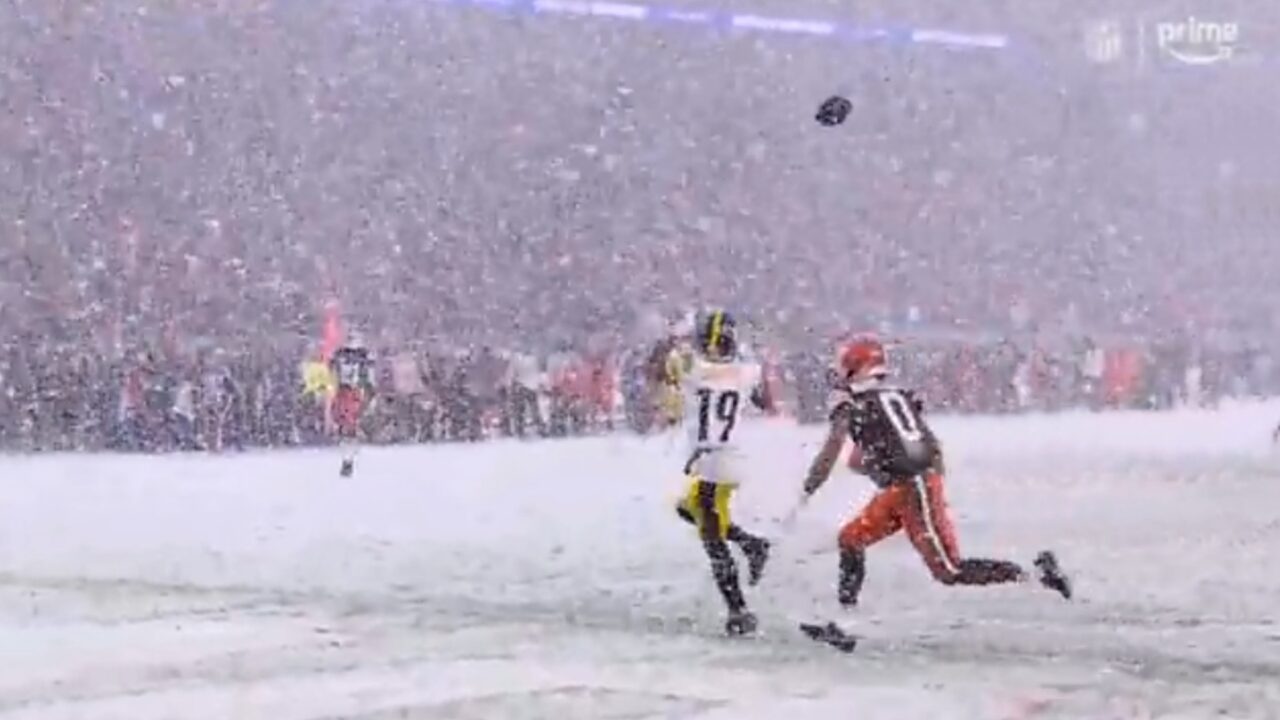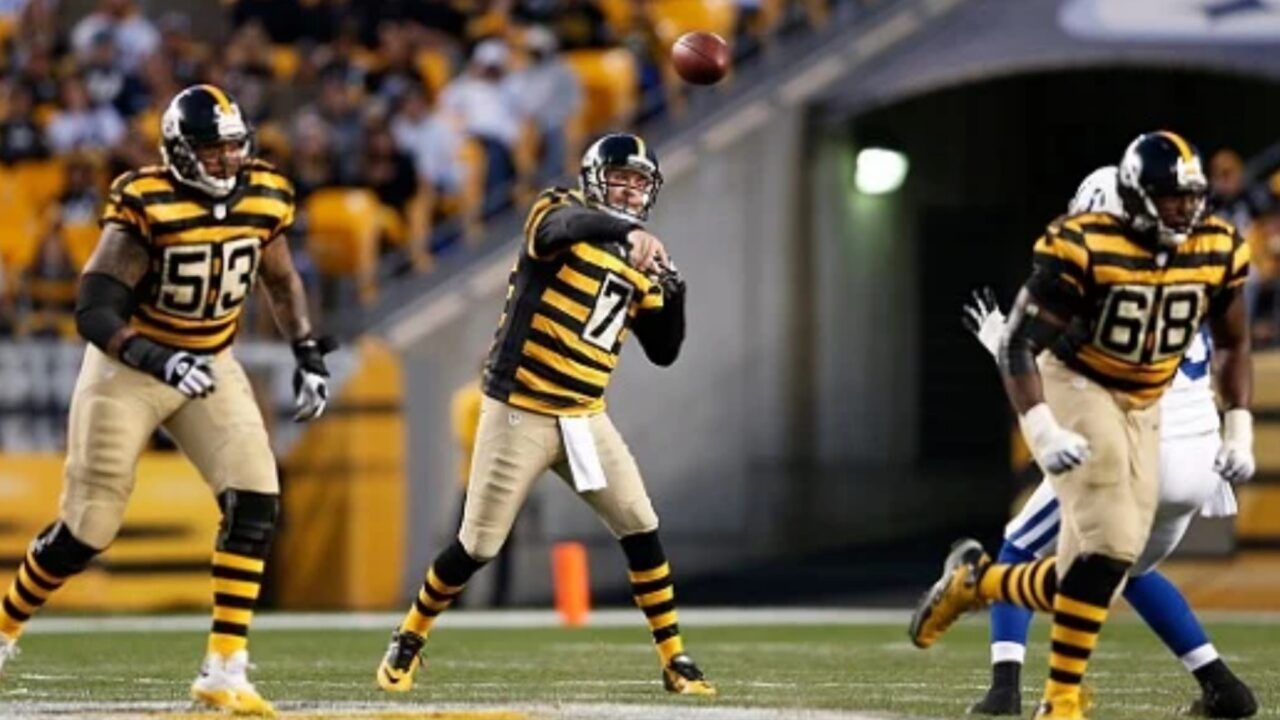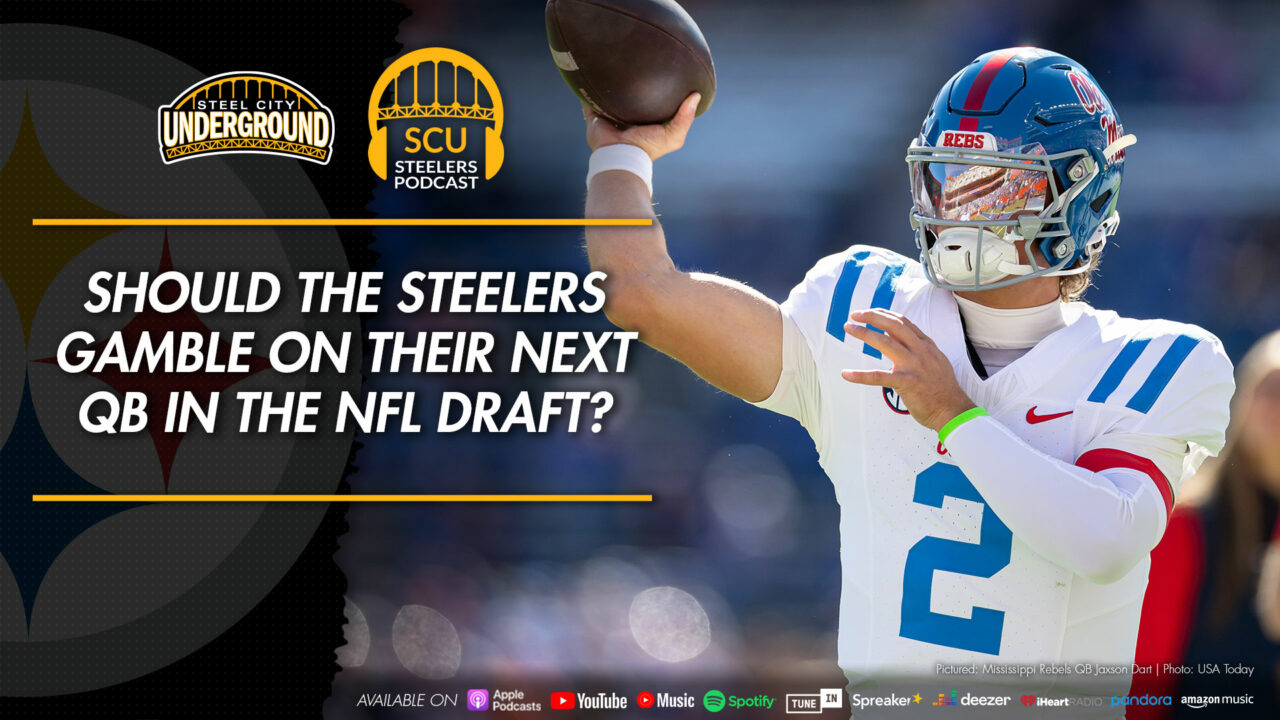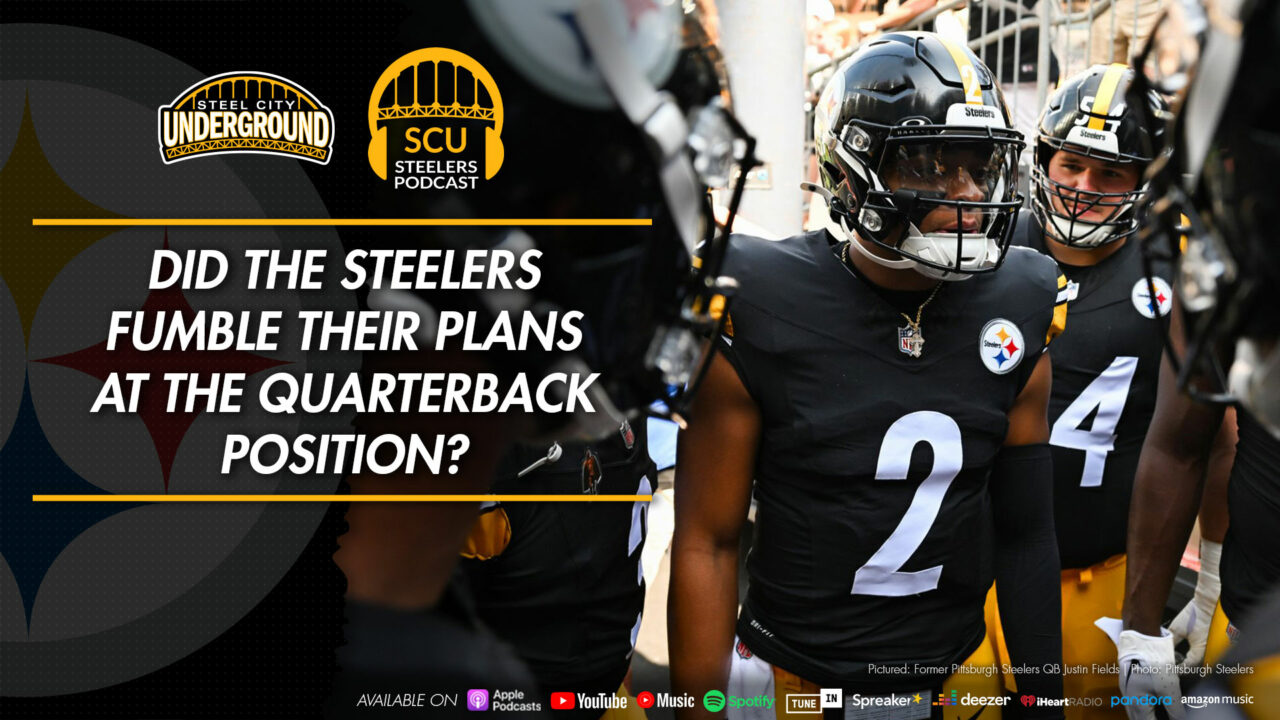Overreactions from Steelers Nation: Tanking for higher draft picks
Welcome to my weekly edition of “Overreactions from Steelers Nation” a weekly column where I poke fun at fans, reporters, and so-called experts while trying to figure out if some of these hot takes are real – or just for attention.
This has to be one of the dumbest things I’ve been seeing all over the Internet: the Steelers shouldn’t win games because they need higher draft picks.
In this edition of my weekly column, I have no choice but to try and explain why this is backwards thinking.
Does higher draft position matter?
Yes and no. Obviously, the higher a team drafts, the less chance that a player that particular teams wants to select is taken before they’re on the clock.
If you’re picking number one overall, then you have your pick of the litter. Just don’t screw it up!
And that’s where higher draft position doesn’t always matter. Not every team has the same needs. In theory, if three teams in the top ten picks need quarterback and edge rusher, then the top offensive tackle or cornerback could still be on the board to those picking in the next ten picks. And so on and so forth.
High picks guarantee nothing
Consider that T.J. Watt was the 30th overall pick of the 2017 NFL Draft – that alone shows “tanking” doesn’t win you anything in the offseason, or later in the regular season.
Watt isn’t alone, as other Steelers picks taken in the back half of the first round turned out well. David DeCastro (24), Cameron Heyward (31), Maurkice Pouncey (18), Santonio Holmes (25), Heath Miller (30), and Bud Dupree (22) are all good examples of quality drafting regardless of draft position.
Take some other names around the league for example too. In 2015, Vic Beasley was the 8th overall pick to the Atlanta Falcons. He’s now playing in the rebooted XFL next spring. The next three picks after him, Ereck Flowers, Todd Gurley and Trae Waynes are all out of the league.
Karl Joseph, the 14th overall pick in 2016 to the Raiders, was on the Steelers practice squad in each of the last two seasons. John Ross, a wide receiver taken by the Bengals 9th overall in 2017, also flamed out.
I can cherry-pick many others, including a few Steelers picks such as Jarvis Jones and Artie Burns, but the truth remains that picking higher doesn’t always equate to picking better. (And no, as shown, failed picks are not something exclusive to only the Steelers!)
Draft classes by position
Another consideration in the draft is team needs versus what’s available. In this year’s draft, the quarterback class which included Kenny Pickett was thought to as being a weak group.
This also happens at other positions. The Steelers selected Pat Freiermuth in 2021 because the tight ends groups have traditionally been poor and the Penn State product was thought of as a complete player: and second only to a generational athlete, Kyle Pitts, who was taken fourth overall.
The same can be said for other position groups depending on the season and which college players declare for the draft. Taking an offensive tackle from a weak group in round one, out of necessity, doesn’t promise that player will pan out as a pro.
Likewise, if you’re drafting 12th overall and four tackles are already off of the board, you may opt to take the best player available at another position rather than gambling on the fifth available tackle, of course, depending on the team’s evaluations and draft board.
Two good examples are Najee Harris and George Pickens.
Harris was the top running back taken in 2021. The Steelers were panned for passing on offensive linemen, but Penei Sewell, Rashawn Slater, Alijah Vera-Tucker, Alex Leatherwood, and Christian Darrisaw all came off of the board before Pittsburgh was on the clock with the 24th pick.
The Steelers could’ve opted for Landon Dickerson (who had injury concerns coming out of college), Liam Eichenberg, Tevin Jenkins (who has struggled to stay healthy through two seasons), or Walker Little and Jackson Carman, neither of whom are starters despite being top 50 picks.
On the flipside, George Pickens was thought to have been overlooked and was the 52nd pick in round two of this year’s draft. He was the 11th receiver taken in a very deep class, proving not all drafts and picks can be evenly compared.
Drafting another quarterback
Then there’s the camp who believes Kenny Pickett shouldn’t have been a first-round pick, simply because other teams didn’t jump at the opportunity to burn future picks to acquire him.
The top of a “weak” quarterback class, Pickett was the only one who was considered pro-ready, and Pittsburgh was able to take advantage of how other teams ahead of them in the draft order weren’t as needy at the position. For the criticism that Pickett has received, his progression appears to be on track with or even slightly ahead of past rookie quarterbacks. He was far from a bonafide top pick, such as Andrew Luck or Joe Burrow, but that doesn’t always matter.
Derek Carr and Jalen Hurts were both second round picks who have worked out well for their teams. But then you have an onslaught of others who were highly regarded picks that never seemed to fulfill their draft pedigree, such as Jared Goff, Jameis Winston, Marcus Mariota, Baker Mayfield, Sam Darnold, and now apparently Zach Wilson, and yes, even Steelers veteran Mitchell Trubisky.
I understand that the 2023 quarterback draft class should have several higher profile names and be superior to Pickett’s 2022 class, but again, that doesn’t guarantee results. Josh Allen, Josh Rosen and Lamar Jackson were all in the same class with Mayfield and Darnold. All but Jackson were taken in the top ten picks.
You also have teams such as the 49ers, who gave up multiple future draft picks to move up and select Trey Lance in 2021: he went third overall behind Trevor Lawrence and Zach Wilson. All fine prospects, but more examples of players who may have come with a high cost to acquire and could still end up not having big professional careers.
Nevermind the time and effort already put into developing Pickett as the team’s starting QB: picking another passer would present the same challenged and development curve, setting the team back another season, as rookie quarterbacks always tend to struggle in year one.
If anything, the Steelers might be able to take advantage of another team’s needs, maybe at quarterback, and gain more draft picks in the process, rather than jump the gun for another Mayfield or Goff to play over Pickett next season.
What the Steelers future looks like
That’s why I’m of the opinion that the Steelers can simply ride this season out. They may get into a position where they start to evaluate younger talent, but the truth is the team is already incredibly young as it is.
Its not as if they have someone waiting in the wings from the last few drafts that hasn’t seen meaningful playing time. Pickett, Pickens, Harris, Freiermuth, Dan Moore Jr., Alex Highsmith, Devin Bush and Diontae Johnson are all day one and two picks who have pretty much been counted on since day one because Pittsburgh can no longer be patient in sitting their rookies to develop.
This reason, and not “lower” draft position, has been a root cause of not having quality depth in the face of injuries. For years, the Steelers were able to stash a pick or two for a year or two, get them acquainted to the NFL, and play them as they saw fit.
That would establish more depth and experience when a player is waiting in the wings. Now those “in the wings” players are mostly undrafted or discarded free agents.
It’s also why the Steelers won’t tank to finish the year. There’s a stigma to losing, and a marked improvement, even if it were a six- or seven-win season, would carry over better into 2023 than finishing as a bottom team.
Most of these players also recognize that the organization will look to make improvements and will be fighting to retain their jobs. It’s silly to believe these same players will intentionally lose games so the franchise can draft their replacement.
That means the Steelers aren’t done yet, and that fans should perhaps enjoy what remains of this season before looking ahead to an NFL Draft that can’t guarantee instant results for the next year.
